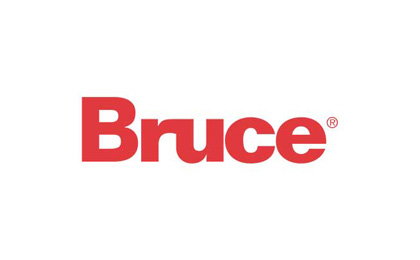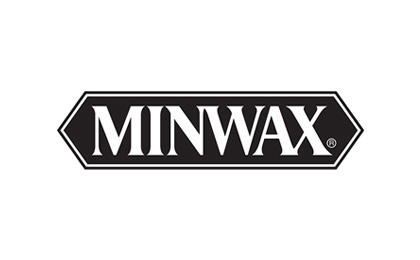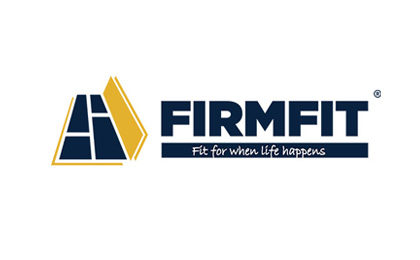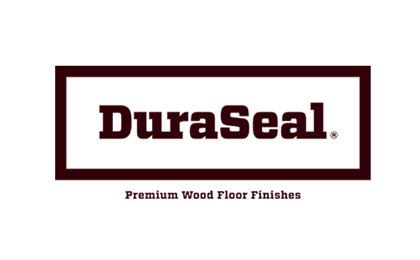Wide plank flooring has been in service throughout this country for hundreds of years. The key to its performance is the amount of change in relative humidity throughout the year at the installation. The use of air conditioning or dehumidifiers in the summer and humidifiers in the heating months will greatly enhance the performance of wide plank flooring. Wood flooring, being a hydroscopic material, will swell with increases in relative humidity levels and shrink with decreases in relative humidity levels in the home.
Are there any special procedures in installing and finishing exotic flooring?
Exotic species tend to be much harder than domestic species and contain a higher resin and extractive content. Because of the higher hardness, many installers will use flooring cleats with their pneumatic nailer instead of the traditional flooring staple. The cleats have less of a tendency to split the flooring tongues during installation than the staples do. During finishing, it is recommended that a water based sealer be applied immediately after sanding and vacuuming exotic hardwoods. Applying the sealer will “lock in” the resins and extractives found in exotic species and prevent their interference with application of the floor finish.
Is it safe to install hardwood flooring over a radiant heating system?
Yes, hardwood flooring can be installed over a radiant heating system, but it is recommended that the width of the flooring installed not be more than 4”. It is also recommended that an engineered, rift sawn or quarter sawn flooring be used because of its superior dimensional stability. The sub-floor must be thoroughly dry, this can be accomplished by running the heating system for 1 to 2 weeks prior to installation. This will prevent moisture from entering the flooring from the subfloor while the heating system is running. You should make sure that your flooring is thoroughly acclimated prior to installation. As with any hardwood installation, floor performance will be dependent on the severity of fluctuations in relative humidity in the home throughout the year. The NWFA has specified guidelines for installing over radiant heating systems. Every installation situation is different and manufacturer’s directions should always be followed to specification.
I’m looking for a wide plank product that is not listed on this website, can you help me find this flooring?
We would be glad to research and quote you a price on any flooring product you may want. We source from a variety of different vendors and mills. Our sources should be able to meet the specific width or specie of wood which you are trying to find.
What does the Janka hardness number mean?
The Janka hardness number is a measure of a wood’s hardness and its ability to resist denting. The higher the Janka number, the harder the wood. Red Oak is used as the benchmark for flooring in the Janka test. The test measures the force required to embed a .444 inch steel ball to half its diameter in the wood being tested. Just because a wood has a low Janka rating does not mean it is not useful as flooring. It just means that the floor will show more of the nicks and dings of normal use as it ages. For someone wanting to reproduce an older antique look, a low Janka rating would not be thought as being detrimental. View the Janka rating of common woods on our Hardness of Wood Flooring Species page.
Are pine and poplar too soft for flooring?
Both can be good choices for flooring depending on your style and needs. There are White Pine floors still in use today in New England that are over 300 years old. They do show the nicks and dings of age, but this just adds to their character, history, and patina. Pine and Poplar are by no means as hard as Oak, but the dents occurred during normal use as flooring will in no way shorten the lifespan of the floor.
Why do you offer random width products?
We sell random width flooring for several reasons. In the industry manufacturers achieve the greatest yield from random width kiln dried lumber. We try to keep planks to the maximum width and length that each board processed will allow. This helps us keep costs down and keeps our flooring reasonably priced. We don’t want to be like everyone else and supply the run of the mill commodity strip flooring product. We think that customers, like you, want a quality hardwood flooring product that is different from the standard 21”/4” Red Oak strip product. At Baltimore Floor Works, we believe that random width flooring helps our customers reproduce the look of an earlier generation floor. Up until the latter part of the 19th century all wood floors were random width. Only in the late 19th century and through the 20th century have we evolved to the standard boring strip floor. Our random width flooring will help you create that special look of the past but in the present for your home.
I’m concerned about the environment, Is hardwood flooring a sound environmental choice?
In a word, Yes. Trees are a valued renewable natural resource, and as long as we manage this renewable resource on a sustainable yield basis it will continue to supply our wood resource indefinitely. In the United States the annual volume of hardwood growth exceeds the actual volume of hardwood timber harvested. We are growing more hardwood than we are using each year, i.e., we have a sustainable yield. Unlike petroleum, steel, and stone based products, we can plant (grow) more trees for our future wood needs. Also, the harvesting and processing of timber products requires far less energy than the processing of these other building products. We also recycle wood or reclaimed flooring that was used years ago in barns, factories, fencing, and warehouses into beautiful antique flooring. Wood flooring is a very sound environmental choice for floor covering. For more information about forestry in the United States, please feel free to contact the F.S.C. or the NWFA organization in the flooring industry.
Why can’t I use old wood milled by a friend?
He has a saw mill and I can save money. Milled lumber which is considered antique flooring must be kiln dry professionally. This wood can carry insect larvae which could hatch and infest a home or building.
Is there wood flooring that does not need to be glued or stapled down?
Yes, We do offer some engineered flooring products that can be “floated” over an existing layer.
Can I put hardwood flooring in my basement?
Yes, Engineered hardwood floors are an excellent for installation below grade. Many manufacturers like Mannington and Somerset make quality products that can be glued directly to a concrete slab or floated. These products can be maintained just like solid wood flooring and can even be sanded and refinished. Engineered flooring is available in as many styles and price ranges as traditional hardwood flooring.
What is Plank flooring?
Plank Flooring are boards with a width of 3″ or wider.
What is engineered wood flooring?
Engineered flooring consists of a layer of wood veneer or ‘wear layer’ over several layers of cross glued wood. * Wear layers can be up to 4mm thick which can be sanded and refinished several times. Engineered wood can be glued or stapled down and is suitable to install above or below grade. Engineered flooring is offered in a wide variety of board widths, wood species and stain colors. This type of flooring can usually be floated on a concrete floor.
What is pre-finished wood?
Pre-finished wood flooring which has been finished with UV polyurethane and aluminum at the pre-finished factory. This flooring can be installed and walked on the very same day! Prefinished flooring is offered in a wide variety of board widths, wood species and stain colors.















